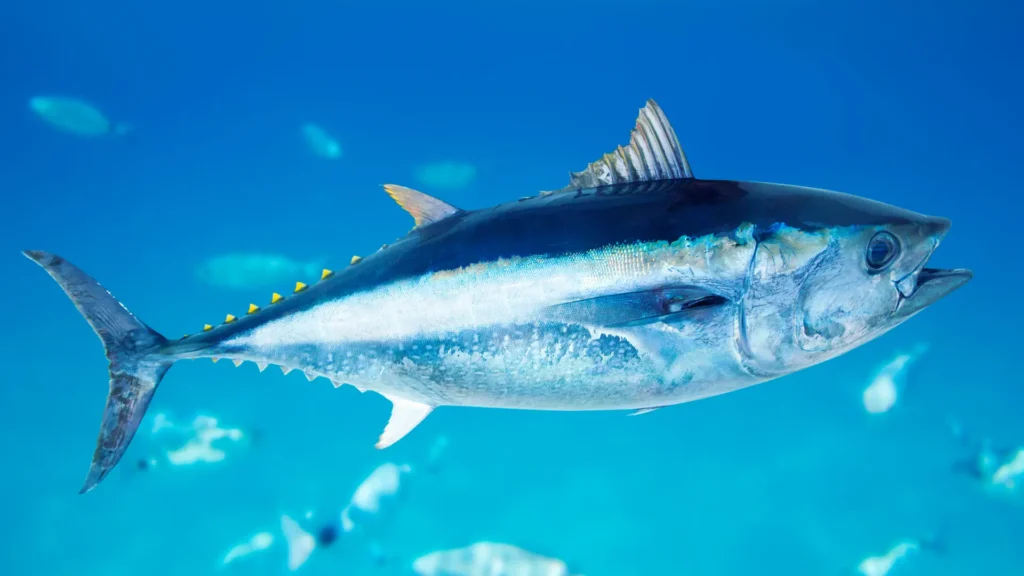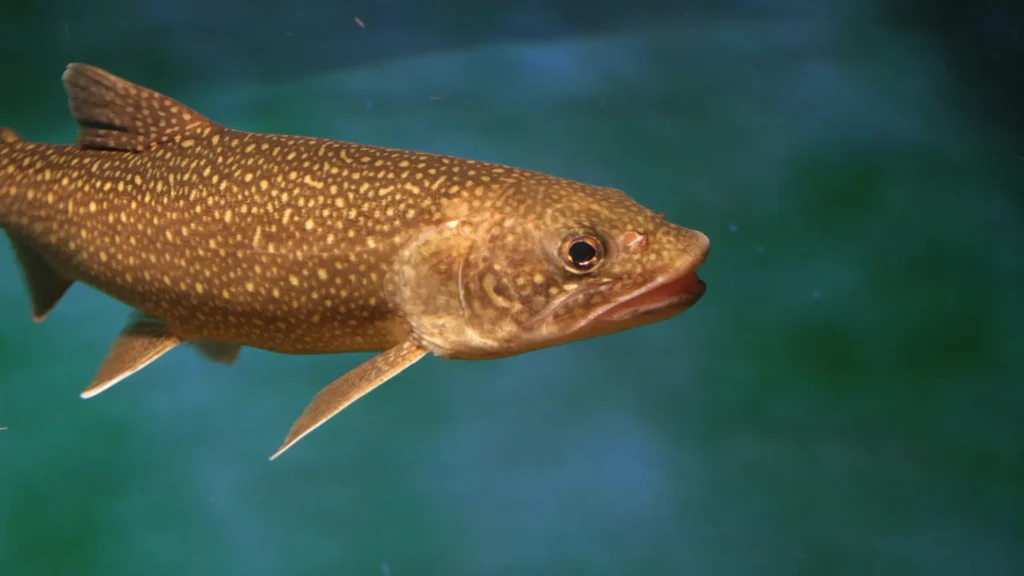Panfish are a diverse group of freshwater fish that are known for their small size and sportfishing appeal. From the vibrant hues of the bluegill and pumpkinseed sunfish to the feisty nature of the green sunfish, there are several existing species to discover.
In this article, we will explore the various types of panfish, highlighting their unique characteristics and the joy they bring to anglers. So, grab your fishing rod and let’s dive into the world of these fascinating fish.
What are Panfish?
Panfish, such as bluegill and green sunfish, are popular small freshwater fish among anglers. They’re ideal for pan-cooking due to their small size. These fishes can be found in rivers, lakes, and ponds throughout North America. They have distinctive traits, habitat preferences, and feeding habits, making them an exciting catch.
Bluegill sunfish attract anglers with their vibrant colors and abundance. While green sunfish in warm, slow-moving waters captivate with their aggressive behavior. Despite their smaller size, they offer a challenge and can be caught with light tackle. Found in shallow waters near shorelines and aquatic vegetation, they are easily accessible without specialized equipment or boats.
Types of Panfish
- Bluegill Sunfish
Bluegill, a sunfish species, are highly sought after by freshwater anglers. These omnivorous fish consume a diverse diet, including insects, snails, crayfish, smaller fish, fish eggs, and zooplankton.
Appearance
Bluegills are easily recognizable due to their larger, deep bodies. They have dark bluish-green sides with 6-8 vertical bars and a prominent dark spot at the dorsal fin. Typically 6-11 inches, panfish have a deep orange to rust-colored belly and can reach up to 16 inches in size.
Bluegill can reach lengths of 16 inches and weigh up to 4lbs 12oz. Although they are typically found in the 6-8 inch range. Due to their abundance, most states do not impose a size limit on bluegill. However, anglers generally refrain from keeping bluegill under 7 inches as there isn’t much meat left after fileting.
Location
Bluegill, originally from the eastern US, have spread to other parts of the world. They can be found in lakes, ponds, rivers, and reservoirs. Bluegill tend to stay in shallower areas with cover like vegetation and fallen trees, making them easy targets for fishermen.
Lifespan
Bluegill have a lifespan of 5 to 6 years in the wild and 8 to 10 years in captivity. They experience rapid growth in their first year, reaching 2 inches in length.
- Green Sunfish
The green sunfish is a member of the sunfish family and can be found in freshwater environments. As omnivores, green sunfish have a diverse diet that includes insects, larvae, zooplankton, fish eggs, snails, crawfish, and other small forage fish.
Appearance
Green sunfish are known for their vibrant blue-green coloration with scattered black dots and a white to yellow belly. One distinguishing feature is a dark spot on the soft spiny part of their dorsal fin, and occasionally a spot on the rear section of their anal fin. These fishes typically range in size from 3 to 7 inches, but can occasionally grow up to 12 inches and weigh up to 2.2 lbs. A catch exceeding 8 inches is considered a trophy.
Location
This sunfish is native to various regions in the US, northeastern Mexico, and southern Canada. They have become invasive in Europe, South America, Africa, and Asia. In Florida and New Jersey, they must be eliminated if caught.
These species can adapt to different aquatic settings like lakes, ponds, rivers, creeks, and reservoirs. They prefer shallower areas with cover, which explains their successful establishment worldwide.
Lifespan
The green sunfish, with a typical lifespan of 4 to 6 years, undergoes a growth journey that spans approximately 2 years before reaching its full size.
- Redear Sunfish
Redear sunfish, part of the sunfish family, are intriguing freshwater fish. Their diet includes mussels, snails, mollusks, zooplankton, amphipods, algae, worms, insect larvae, crayfish, small fish, and fish eggs. This adaptability contributes to their overall success.
Appearance
The redear sunfish has a deep body, petite mouth, and subtle coloration. It has an olive green body, yellow-green sides, and a white underbelly. One distinctive feature is the red-orange adornment on its gill flap, which contrasts with its dark-colored, spiny dorsal fins.
While it has the potential to grow up to 17 inches and weigh up to 6.3 lbs, redear sunfish are typically caught by anglers within the 7 to 9-inch range.
Location
Redear sunfish, found in the southeastern United States. They have also been introduced to regions like Morocco, South Africa, Panama, and Puerto Rico. They adapt well to different aquatic habitats, including lakes, ponds, streams, reservoirs, rivers, marshes, and overflow pools.
With a preference for clear, calm, and warm waters, they can often be found taking shelter near logs and vegetation.
Lifespan
These fishes typically have a lifespan of 6 years in the wild. While those in captivity can live up to 8 years. It takes these fascinating creatures around 1 to 2 years to reach maturity.
- Longear Sunfish
The longear sunfish, belonging to the sunfish family, is a species of freshwater fish. Known for their omnivorous nature, they have a diverse diet that includes snails, crayfish, insects, small fish, and even fish eggs.
Appearance
Longear sunfish are beautifully colorful, with vibrant red to orange undersides and mesmerizing turquoise markings on their head and fins. They are easily recognizable with their striking red eyes and long gill flap.
These sunfish are charming with wavy-blue lines on their cheeks and gill covers. They can grow up to 9.5 inches long and weigh up to 1 lb 12 oz. Despite their smaller size of 3 to 6 inches, they are full of character.
Location
The longear sunfish, native to eastern North America and northeastern Mexico. They can be found in various aquatic habitats across most US states. These vibrant fish thrive in a wide range of environments, including streams, rivers, lakes, ponds, reservoirs, and estuaries.
You’ll often spot them near aquatic vegetation, as they prefer clear, warm, and shallow waters. Their adaptability allows them to flourish in diverse ecosystems, adding to their allure for anglers and nature enthusiasts alike.
Lifespan
In the wild, the longear sunfish usually lives for around 4-6 years, whereas in captivity, their lifespan can extend up to 9 years. These vibrant fish typically take approximately 2 years to reach maturity.
- Pumpkinseed Sunfish
Pumpkinseed, a species of freshwater fish in the sunfish family, are known for their omnivorous diet. They are colorful and eat a wide range of food like snails, worms, insects, mollusks, tadpoles, small fish, and vegetation. Their diverse feeding habits make them adaptable and well-equipped to thrive in their aquatic environment.
Appearance
The pumpkinseed is a beautiful sunfish with bright orange, blue, yellow, and olive green colors. Their cheeks have charming waves of blue and orange, and their belly is a vibrant orange. They have distinct black earflaps and a subtly forked tail. The dorsal fin has around 10 spines and a graceful rounded shape.
Pumpkinseed are usually found in the modest range of 5 to 6 inches. Although some can grow up to 12 inches and weigh 1.5 lbs.
Location
Pumpkinseed, a popular panfish species, are native to the eastern United States and now found throughout North America. They thrive in diverse aquatic habitats like lakes, ponds, streams, and reservoirs. Pumpkinseed prefer warm, calm waters with vegetation and tend to stay near shorelines. In winter, they gather in deeper areas.
Lifespan
Pumpkinseed lifespans vary based on habitat. Wild ones live 6-8 years, captive ones up to 12. They mature in 1-3 years. See table for more info.
- Redbreast Sunfish
Redbreast sunfish, a species of freshwater fish, are known for their diverse diet. They consume insects, crayfish, mollusks, larvae, and small fish, among other food sources. This adaptability allows them to thrive in different aquatic environments.
Appearance
The redbreast sunfish, with its vibrant blue-green body and orange-yellow belly, is a small sunfish species. It has striking blue streaks on its cheek, back, and upper side. What sets it apart from other sunfish varieties is its long, black ear flap.
These sunfish are usually 4 to 6 inches long, weighing less than a pound. However, it’s possible to catch larger ones up to 10 inches and 1 lb 12 oz. Some anglers targeting 8-inch or larger trophy catches.
Location
The redbreast sunfish, a native species in Canada and the United States, can be found in various states including Alabama, Florida, Georgia, Kentucky, Maryland, North Carolina, South Carolina, Tennessee, and Texas.
They thrive in diverse aquatic environments, including rivers, lakes, rocky pools, backwaters of streams, and upstream sections of reservoirs. Their preferred habitats consist of rocky, vegetated pools with sandy bottoms. They are drawn to habitats with wood debris, stumps, rocky points, and undercut banks. They prefer areas with current and flow, steering clear of stagnant waters.
Lifespan
In the wild, redbreast sunfish have a lifespan of around 5 to 6 years, while in captivity, they can live up to 8 years. These fascinating creatures usually take about 2 years to reach maturity.
- Orangespotted Sunfish
The orangespotted sunfish is a colorful member of the sunfish family that enjoys a diverse diet of insects, zooplankton, small fish, crustaceans, and larvae. They can grow up to 6 inches long and weigh half a pound. On average, they measure 3 to 4 inches.
The orangespotted sunfish stands out as the exceptional panfish, reaching trophy size at 5 inches or more. Catching one earns anglers recognition for their skill.
Other Panfish Species:
- Rock Bass
- Yellow Perch
- Yellow Bass
- Black Bass
- Sunfish Species
- Perch Species
Conclusion:
Knowing the various panfish types improves fishing trips, making them more enjoyable and successful. Understanding the distinct traits of each species and following fishing regulations allows you to maximize your time on the water while helping preserve freshwater fish populations.
If you have any more questions about the different types of panfish, just drop them in the comment section below!
Additional Resources:
- 5 Most overlooked panfish: https://www.themeateater.com/fish/general/the-5-most-overlooked-panfish
- Everything you need to know about panfish: https://captainexperiences.com/blog/everything-you-need-to-know-about-panfish
- What are panfish: https://www.liveabout.com/what-are-panfish-1310904
- Sunfish fishing: https://www.in.gov/dnr/fish-and-wildlife/fishing/sunfish-fishing/
Types of sunfish in North America: https://fishingbooker.com/blog/types-of-sunfish-in-north-america/


